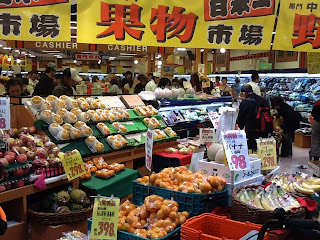(THIS ARTICLE IS CONTRIBUTED BY CHAN CHEH SHIN, MARKET ANALYST OPERATING IN MALAYSIA AND SINGAP0RE. I THANK CHAN FOR SHARING HIS THOUGHTS FOR THE VIEW OF READERS.)
Looking into 2013 investment landscape of G3
Europe: slipping into recession
Please consider the quote and chart below:
The Bundesbank expects Germany's economy to grow just 0.4 percent next year, down from a June forecast of 1.6 percent. The new projection is marked by "a high degree of uncertainty", it added, and "the balance of risks is on the downside". (7 Dec
2012)
Both GDP and PMI are in negative zone now.
By now, EU is in recession. All growth data is contracting. By now, we should be asking: Is EU heading for depression?
Depression has the following characters:
Depression has the following characters:
- Long period of recession;
- Abnormally large increases in unemployment;
- Fall in the availability of credit, often due to some kind of banking or financial crisis;
- Shrinking output as buyers dry up and suppliers cut back on production and investment; large number of bankruptcies including sovereign debt defaults;
- Significant reduced amounts of trade and commerce, especially international;
Points (1) to (3) are already here. Point (4) is coming soon. Point (5) is building up as globally countries will impose more capital control/currency manipulation.
Japan stock is a good buy or good bye?
The previous month, we argued Japanese yen could deteriorate
further. Let’s turn to Nikkei now. It has been in downtrend since 1980.
Will it change?
Naturally, Japan's demographic situation, the pervasive
conservatism and the well-known fiscal debt problem are very negative
for Nikkei. Today more diapers for adults are sold in Japan than diapers
for babies. Isn't the situation hopeless? However, one
would do well to remember at this juncture that this is precisely the
situation found near major lows – all the fundamentals look bad and well
beyond remedy, with a sole exception: stocks are cheap.
That combined with sliding yen, Nikkei will run up. A word of caution:
the weakening of Yen can only help the Nikkei if and only if the factor
for the weak yen is not from loss in Japan financial system/monetary
policy.
US – a better bet?
US
real GDP may expand at a rate below historical trend, but the following
key sectors that will help drive growth over the coming years.
- The Oil & Gas sector will help strengthen the US recovery by reducing the drag from the trade deficit over the coming years.
- The housing market will continue to improve, albeit slowly, which will be instrumental in shoring up household balance sheets.
- The substantial deleveraging in the banking sector over the past five years means that the worst is behind us, thus, a potential for the banking sector to expand slowly, underpinning the economic recovery.
- The US will continue to regain competitiveness in the manufacturing sector as productivity growth outpaces that of wages and the US maintains a competitive advantage in energy efficiency.
- Demographic and regulatory changes mean that growth in the pharmaceutical and healthcare industry will be strong.





































